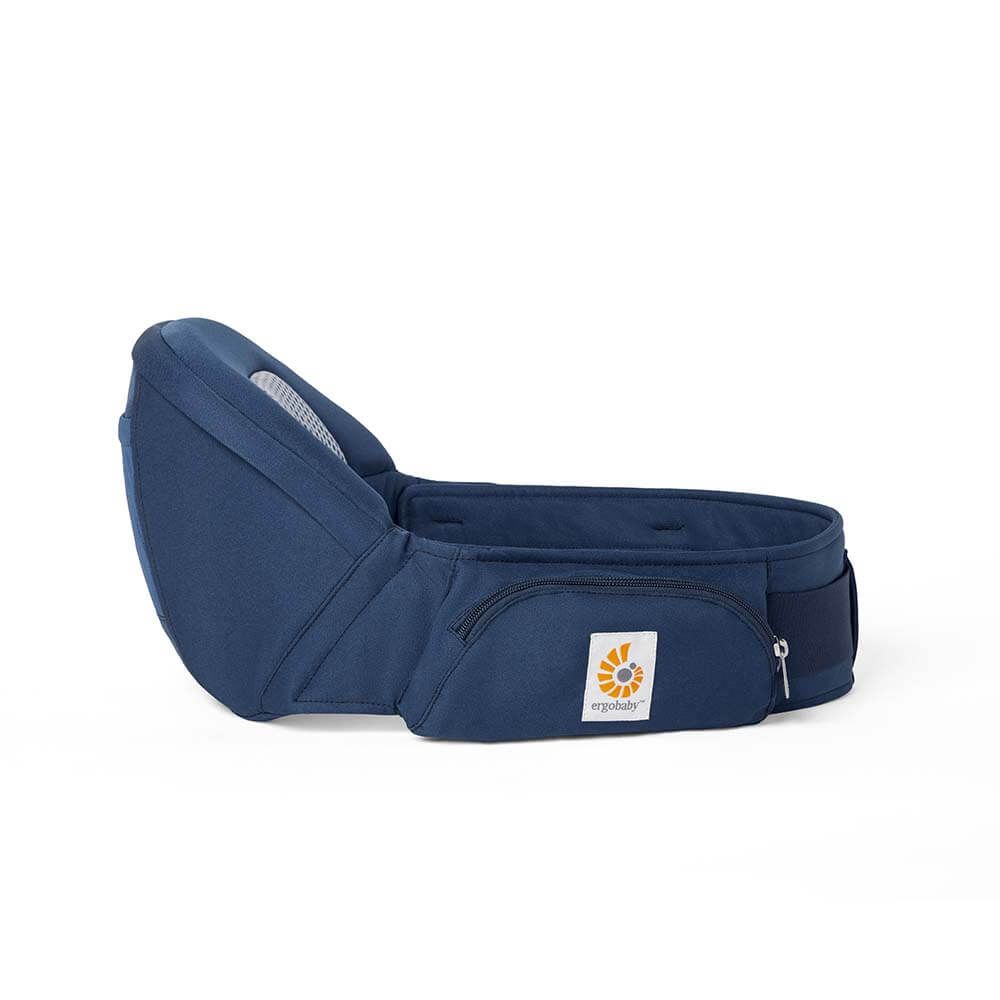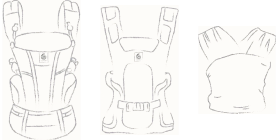Page 42 - Blog
February 01, 2012
Kangaroo Care describes a technique in which infants, often premature and underweight, are placed, skin-to-skin, on the chest of the mother or primary caregiver. This position ensures physiological and physical closeness and warmth. The stable body temperature of the parent can effectively regulate the infant’s temperature, and provides easy accessibility to breastfeeding. Even with the advanced technology in NICUs available in the United States, one recent study noted that 82% of neonatal intensive care units in the US include kangaroo care. Originally devised in in 1978, the concept of Kangaroo Care was the brainchild of Dr. Edgar Rey Sanabria, Professor of Neonatology at Universidad Nacional de Colombia, as a response to increasing mortality rates of premature and low birth weight infants. Lacking the resources for technologically advanced equipment and extra nurses and doctors, Sanabria proposed that allowing mothers to remain skin-to-skin with these fragile infants might increase their
January 04, 2012
“Baby carrying strengthens the bond between you and your baby.” This is a statement you often hear from baby carrying advocates, be it experienced mothers, babywearing consultants or midwives. It really only takes one look at a calm secure parent and her or his quiet, relaxed, content and alert baby in a good baby carrier to instinctively sense that this statement is probably quite true.
These are very fundamental questions: Should I give ample physical contact to my baby? Or, should I leave it more or less physically separated from me in the hope that this best fosters independence? For many parents, instincts and intuition are sufficient guidelines for their parenting choices. However, such instincts can be challenged by conflicting views, purported by some experts in the field. Some will argue that giving too much physical contact to a baby will make it clingy and dependent in the long run. One informational resource for such vital decisions comes from the field of science, in this
January 04, 2012
“As long as I wear him, he’s content,” Martha Sears, R.N., mentioned to her husband, Dr. William Sears, as they discovered babywearing with their sixth child. It is an affirmation of how life works well naturally. The healthiest choice feels good, and feels right, because it supports survival as well as thriving. Babies reflect this in how they are often calmly alert, or quieted, and relaxed into sleeping easily by the simple practice of babywearing. It is the place a baby wants to be; heart-to-heart, skin-to-skin, breath-to-breath and face-to-face; sharing in life’s activities from a soothing place of familiar rhythm, near a comforting heartbeat and easily accessed breast milk. A baby likes the closeness, the movement, and the loving touches from hands that are free, free…free. Babywearing is a win/win/win choice.
Dr. Sears shares his observations after years of advocating babywearing with his patients: Babies who are worn thrive, are calmer, smarter, make daycare easier, and allow
January 04, 2012
There is no way to dispute the advantages of carrying a baby as often as possible. Babywearing is the best way to keep both mother and baby happy, while allowing for the tasks that women (and men) need to do while still caring for an infant. Along with making life’s tasks easier, babywearing has been proven to be good for baby, and mother, on a physiological, mental and physical level. The senses are constantly being ignited in this position. Babies can smell more clearly, see, feel, hear and even taste, if they are breastfed, while still in a carrier. Keeping their senses alive and aware is a very good thing for a newborn baby. Mothers, who carry their babies closely, release more oxytocin when carrying their infants. This helps them to bond better with their babies and breastfeed with greater ease. It also lowers the chances of post-partum depression. Babywearing helps the baby to bond with the mother; making her/him feel safe, secure and protected. Babies who are carried
January 04, 2012
Since the 1950s, more doctors have acknowledged the tremendous healing power of bonding with our young through babywearing, physical contact, breastfeeding and family beds. The physical, mental and emotional health benefits are unsurpassed by any drug or remedy known to man with the benefits lasting a lifetime. Hopefully, this article helps parents to bond with their offspring through a means that is biologically compatible with their infants’ needs because our babies are movement-starved. Bonding is the physical, mental, emotional, and, some might add, spiritual, connection and attachment most parents make with their offspring to varying degrees. It deeply engages all the senses. “The mother is endocrinologically, sensually, as well as neurologically transformed in ways likely to serve the infant’s needs and contribute to her own posterity. The hormone oxytocin, also called the love drug, and known to be as addictive as morphine, is released while breastfeeding, snuggling, or massaging.
December 01, 2011
It’s a vivid memory. I was a new mommy with a very tiny new baby. I was just beginning to feel like I was getting a handle on mothering, when she began to cry. And cry. And cry. Every night, my tiny, precious baby would wail. It always happened after dinner, and always lasted for two or three hours. I was so very confused. She was well breastfed, lovingly carried throughout the day, changed, and clean. She was happy most other times and engaged in life. Yet night after night she would enter this crying zone and no amount of anything would console her. The doctor said she was healthy and thriving, and he could find no medical reason for her tears. So I did the only thing my heart told me to: I carried her and walked with her through her crying spells, until one day they just stopped, and our evenings became peaceful times of connection and play.
I am here to tell you that time passed quickly, as is often the case with babies, but the memory remains. I learned a lot through that process,
December 01, 2011
The No-Cry Sleep Solution Gentle Ways to Help Your Baby Sleep Through the Night By Elizabeth Pantley For those many parents who first tested Elizabeth Pantley’s “No-Cry Sleep Solution,” thank you for your combined patience and persistence proving the efficacy of this system with your own babies. I imagine some parents first picked up this book in a hazy state of mind-altering sleep deprivation, read the title through half-shut eyes, and muttered, ‘My baby? Sleep through the night? Are you kidding?’ The No-Cry Sleep Solution: Gentle Ways to Help Your Baby Sleep Through the Night delivers: there is a ten-step plan you can follow, borne of “dissecting truth from fallacy.” There are insights into the mutual agony for parents and child with the cry-it-out method. You will know you are not alone on this journey as you read parent testimonials and their email updates on their progress, such as, “It was one step forward, two steps back for a while, and now she is sleeping soundly consistently
December 01, 2011
Babies have many ways of communicating with us. They have distinctive cries to tell us when they’re hungry, tired, or gassy, and when they’ve soiled their diaper. The cry of a baby who has colic, however, does not fit into any of these categories. I will never forget the first time a baby who had true colic was placed into my hands. Her cry was piercing and relentless, and none of her parents’ attempts to soothe her were working. It was obvious that she was in extreme discomfort. Her body was rigid and her abdomen was hardened with gas. Her legs and feet were flexed, her back was arched, and her fingers were clenched into tiny fists. Her crying seemed to come from the depths of her being. It is said that when a baby has true colic, their uncontrollable and inconsolable crying lasts for more than three hours a day, at least three days a week, and continues for more than three weeks. Dr. Morris Wessel proposed this widely used definition of baby colic over fifty years ago. Since there are
December 01, 2011
There is little that is more upsetting to parents of a newborn than his inconsolable wails and cries. To parents of a baby with colic, these bouts are all too common, and can cause turmoil and disharmony in even the most solid, happy families.
As the mother of three, I am well aware of the challenges of being a parent to a new being. Each baby is distinctly unique and different from his siblings. My first child had a lovely disposition – cheerful, happy, and content. I thought I had parenting completely figured out, and I wondered about parents who seemed frazzled or stressed by their newborn. What was so difficult about having an infant?
Enter child number two: born two weeks before his predicted due date, he was small and incredibly sensitive. His skin reacted to any fabric, with angry bumps. He rarely slept, except in increments of about ten minutes, from which he awoke shrieking. At around six p.m. each night, he descended into a furious fit of wailing that lasted for about an hour,
December 01, 2011
Sometimes, whatever you do it is not going to work, and sometimes, doing nothing is what works best. This is true of a lot of things in life, from curing a headache to fixing a drain, but is never more obvious than when trying to stop a baby from crying. This morning, I was taking my usual walk. It’s a 2.2-mile loop that takes me about 40 minutes. It is a great part of my day, and I always see an interesting cross section of people in the neighborhood walking, running, biking and pushing baby strollers. Today, while I was about half-way around, I saw a young couple walking towards me with their baby screaming at the top of her lungs in her stroller. They looked so tired, so utterly exhausted, that I had to say something to them. “Rough night?” I asked. After rolling their eyes and nodding their heads in agreement, they said, “You know it!” We chatted for a moment, and I commiserated with them about their struggle. “Sometimes just taking her outside is the only thing that helps.”





















